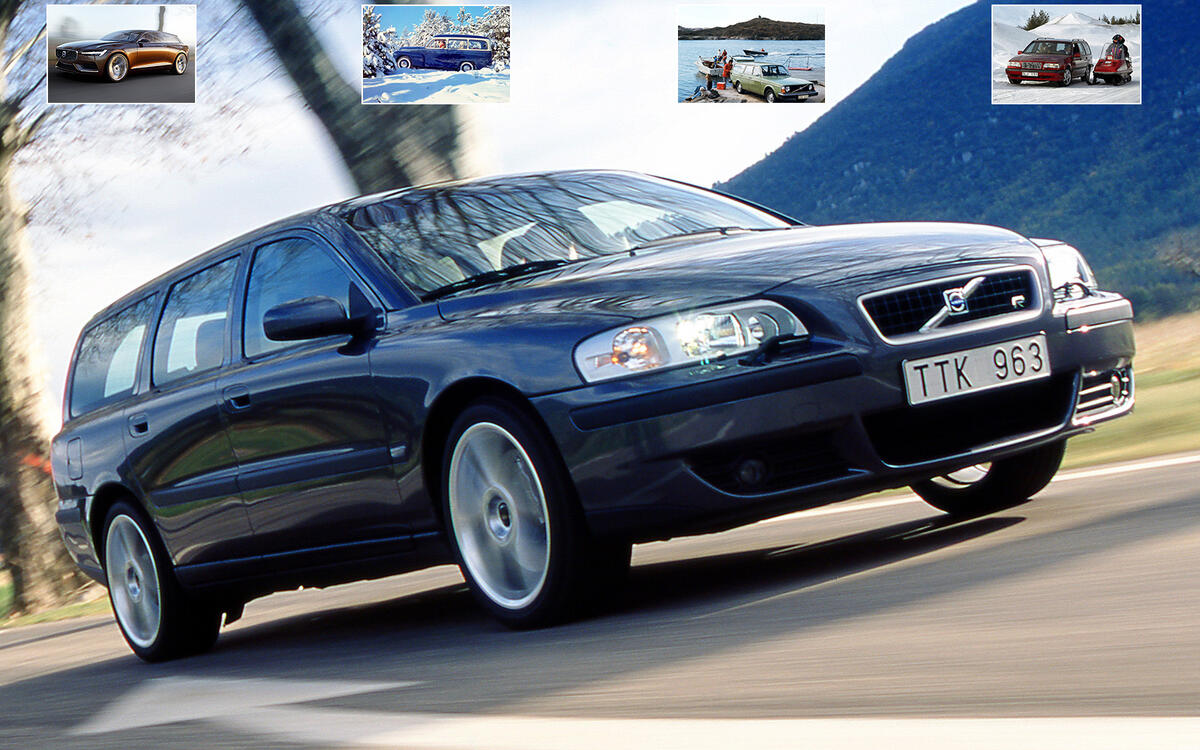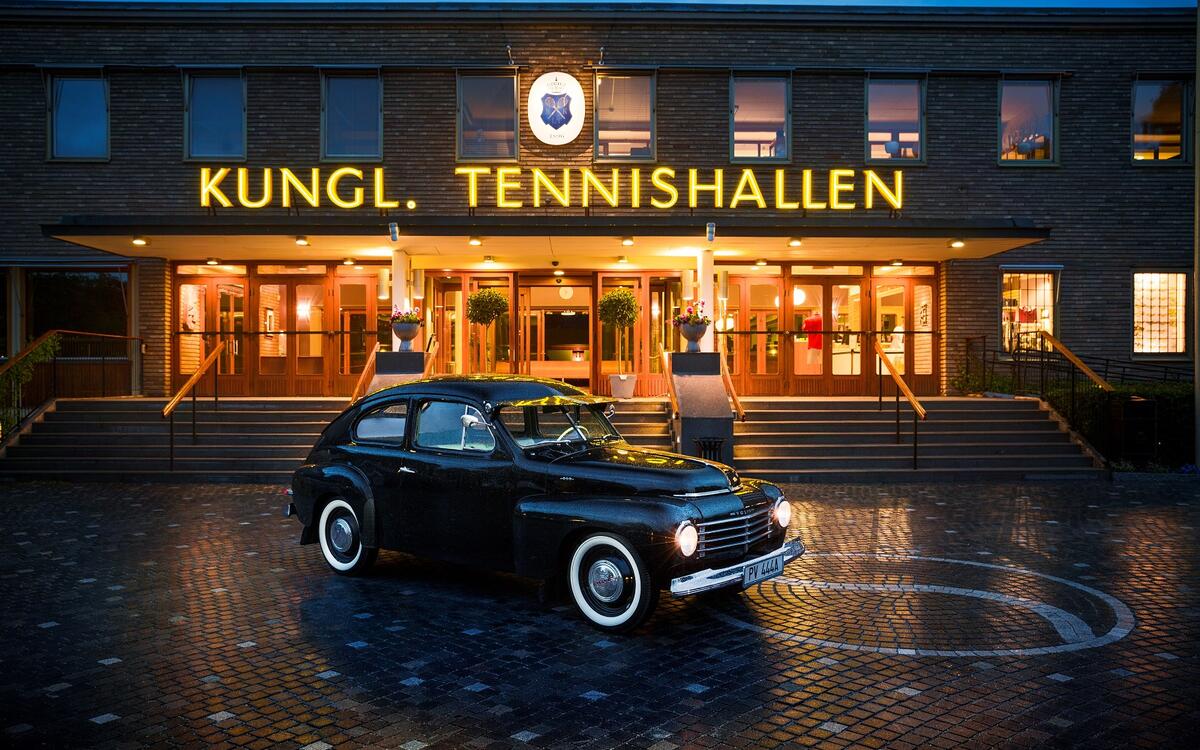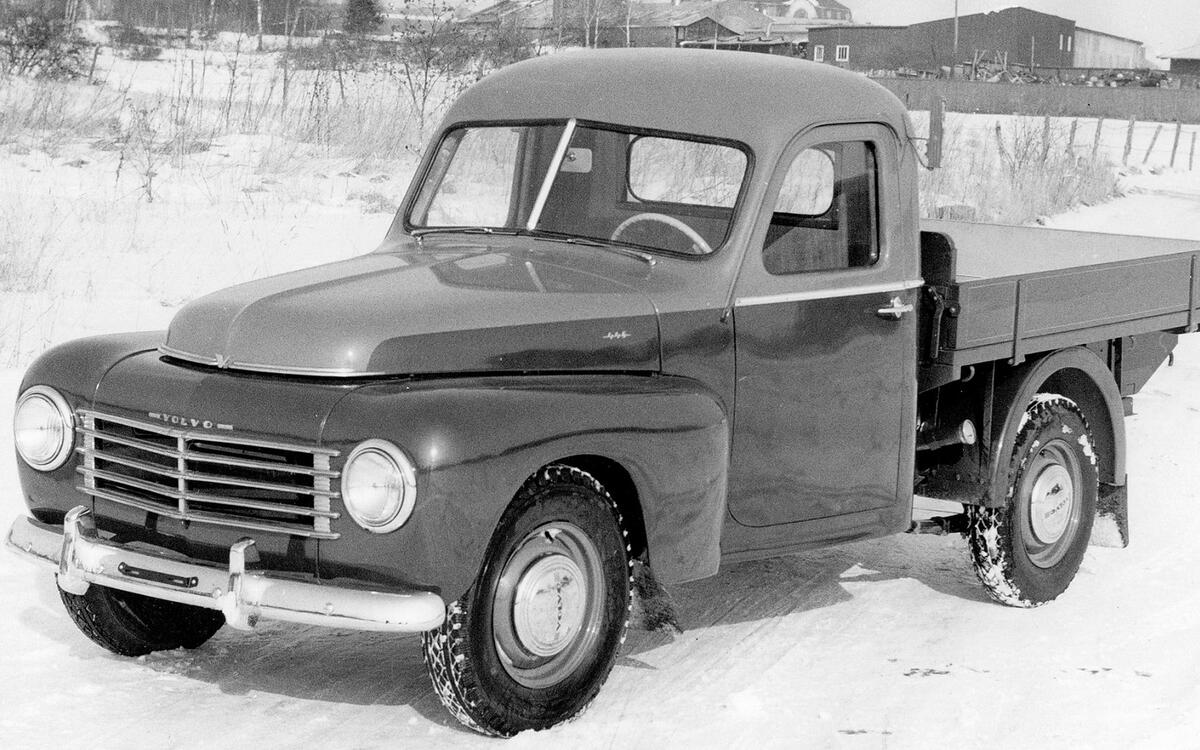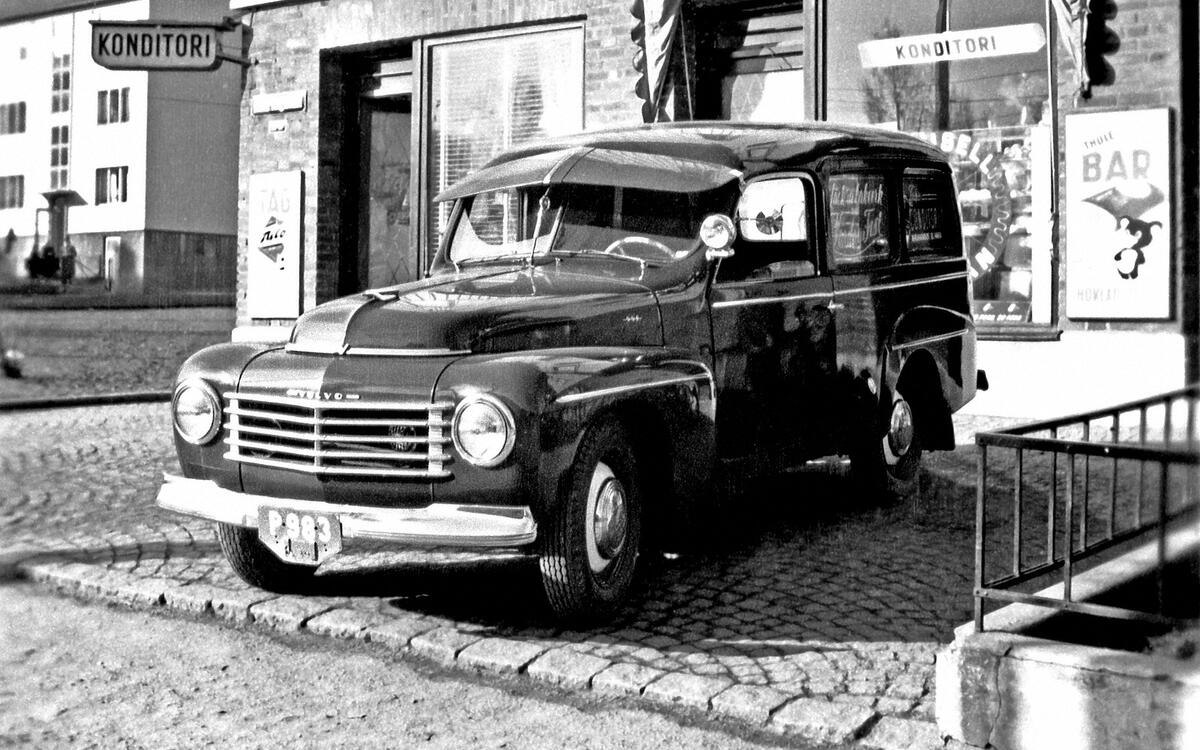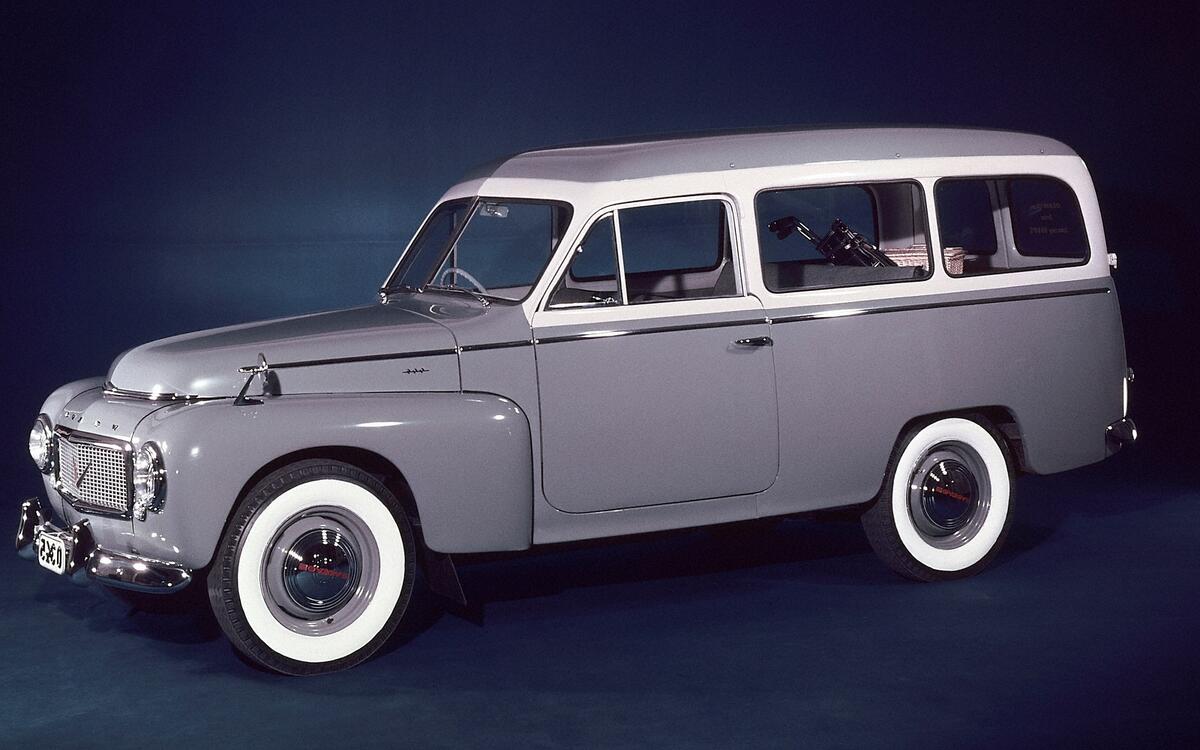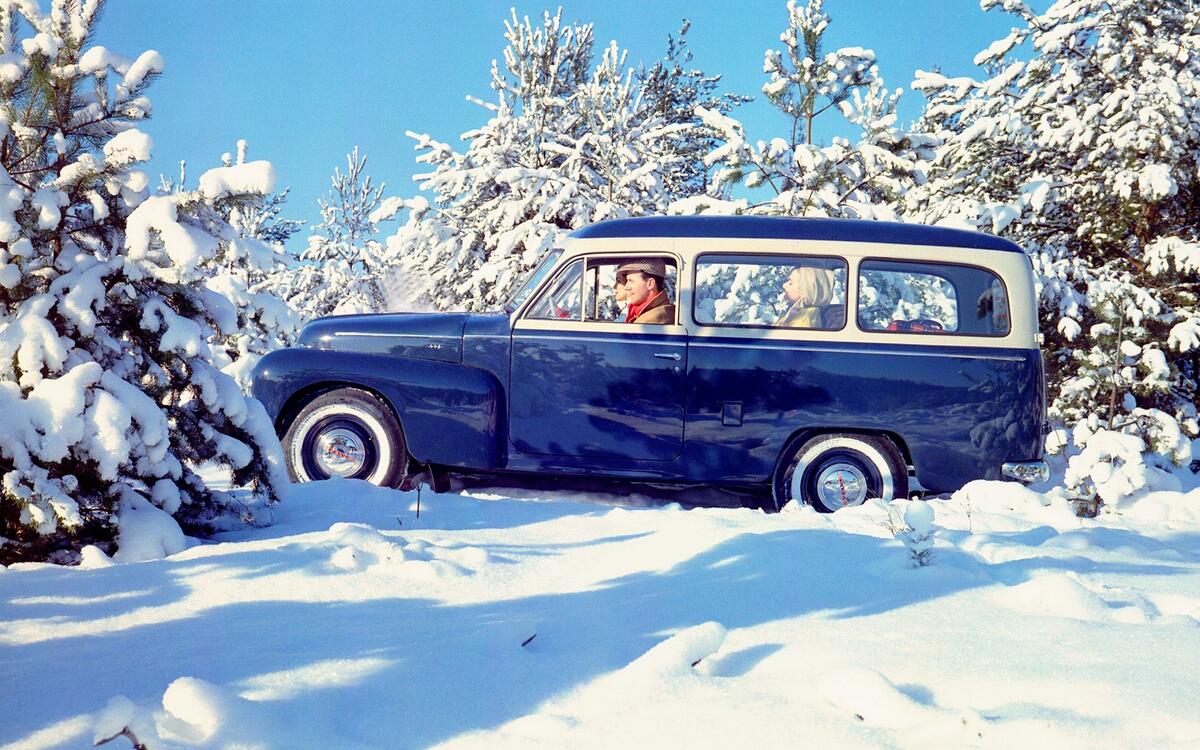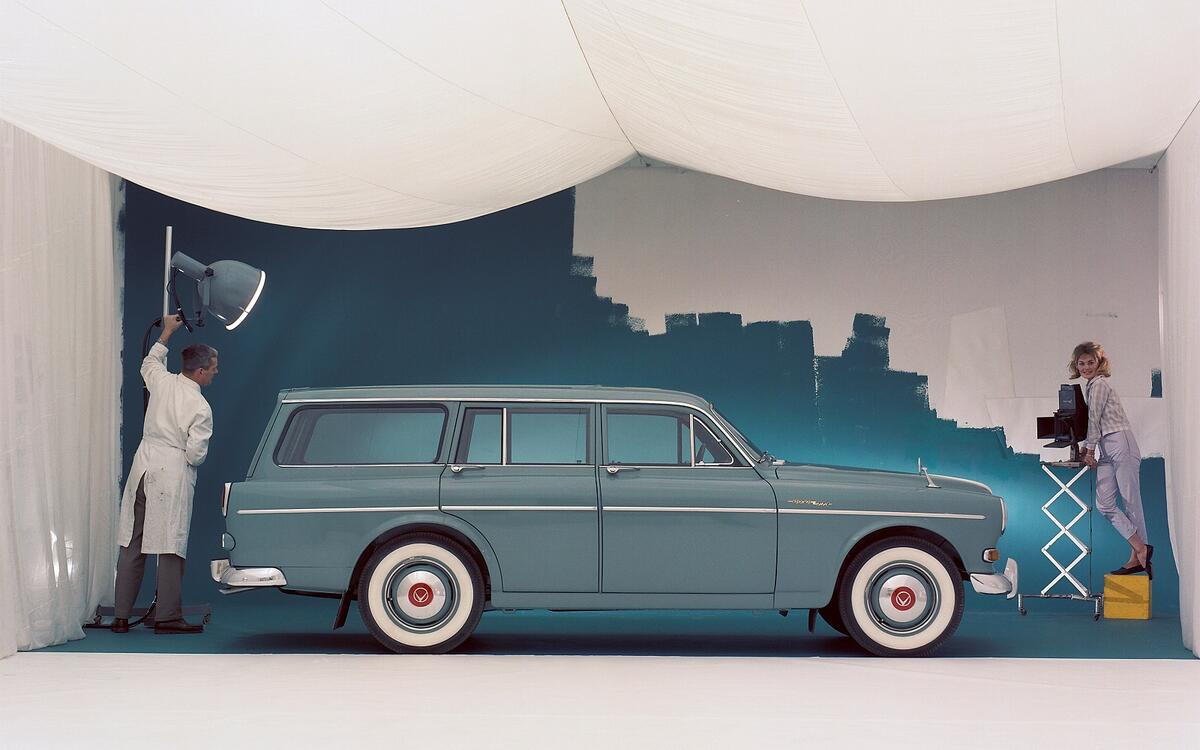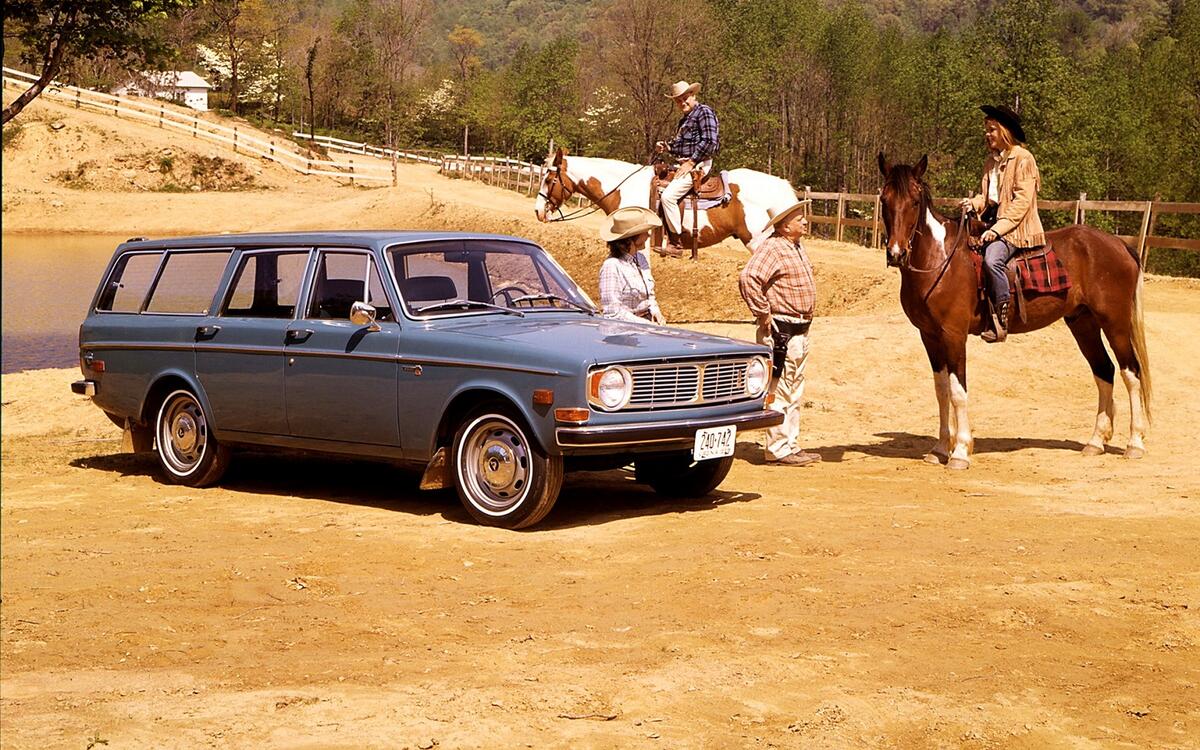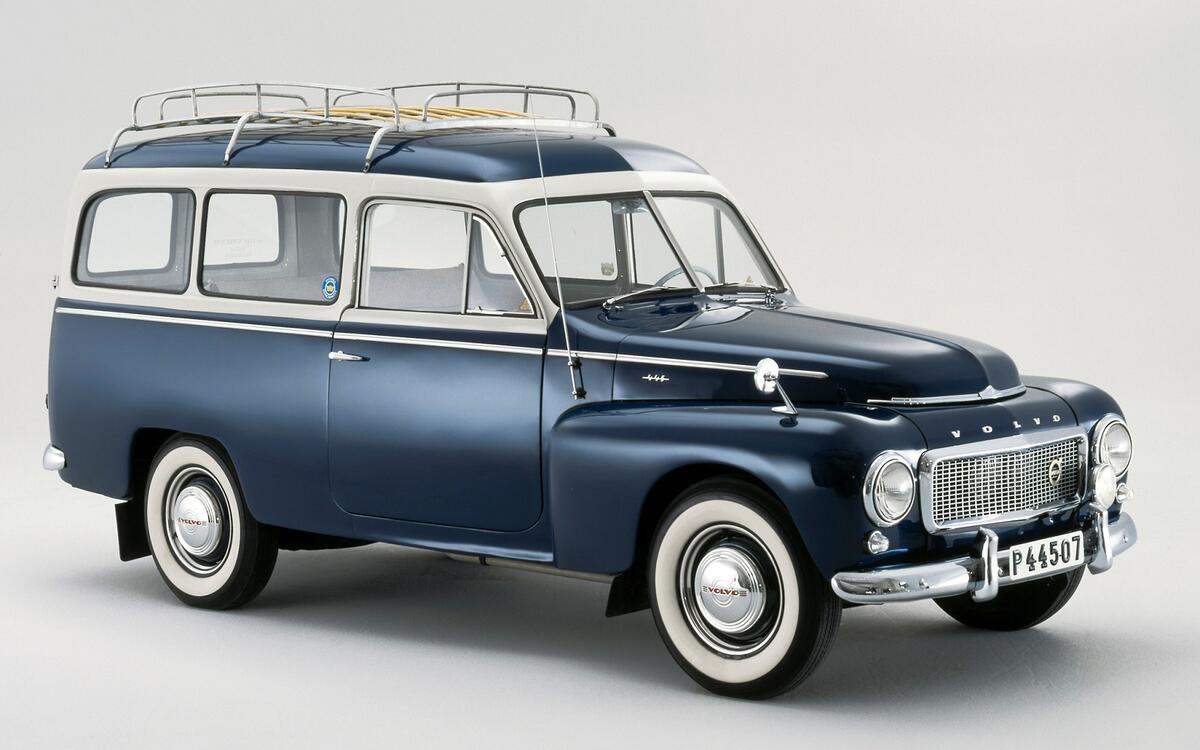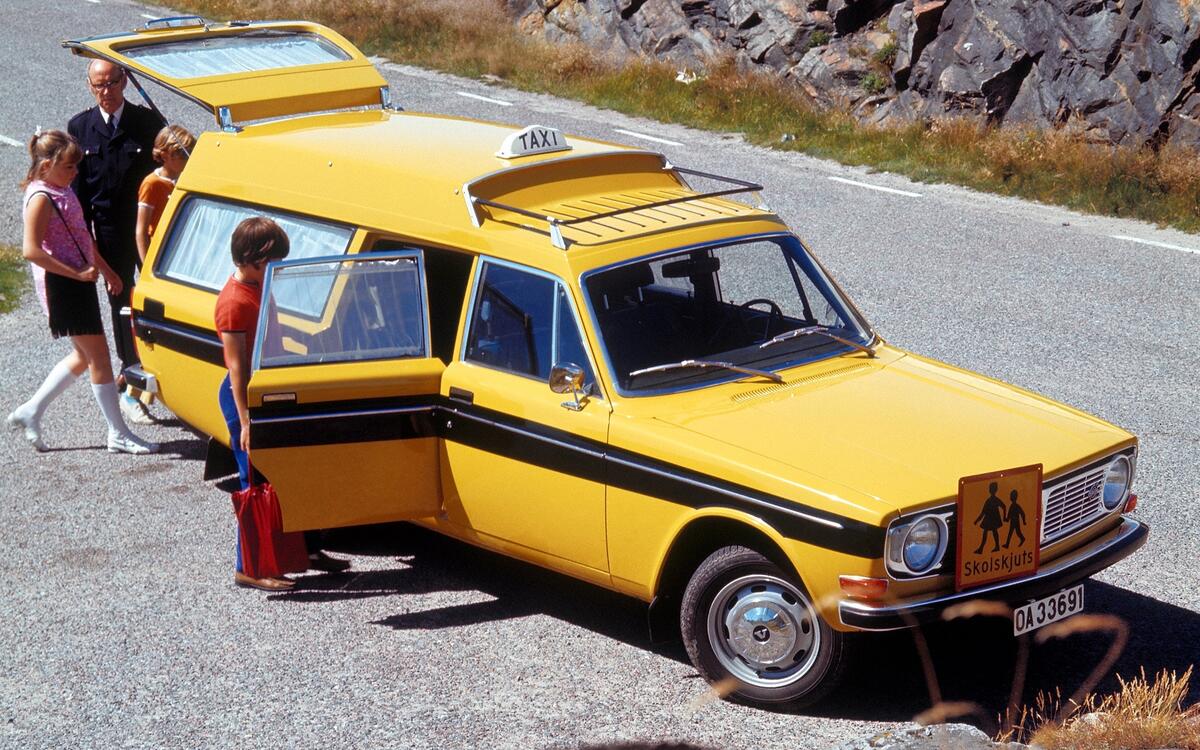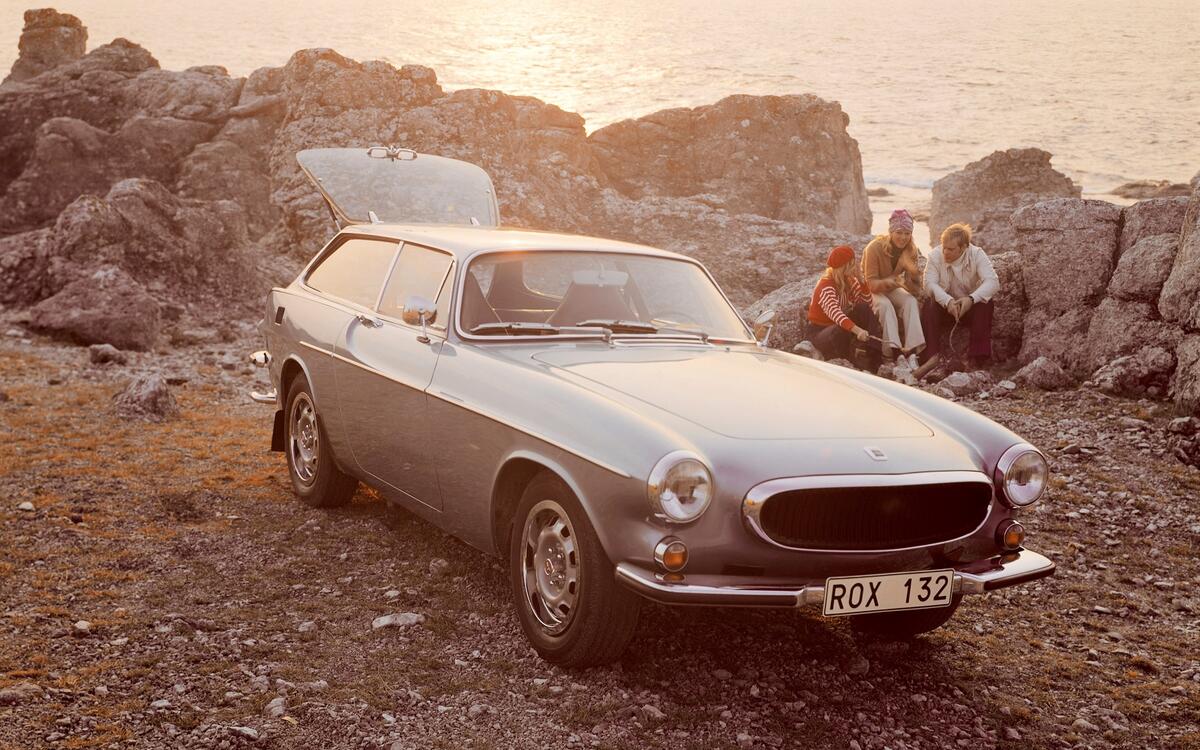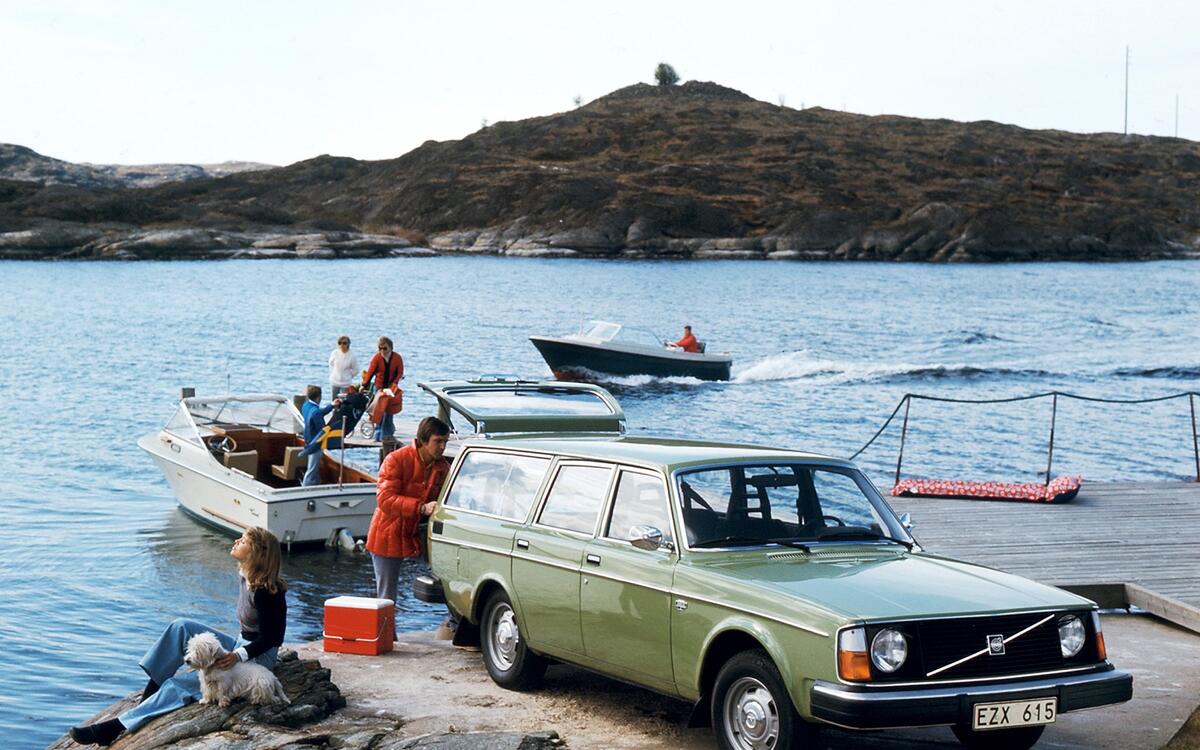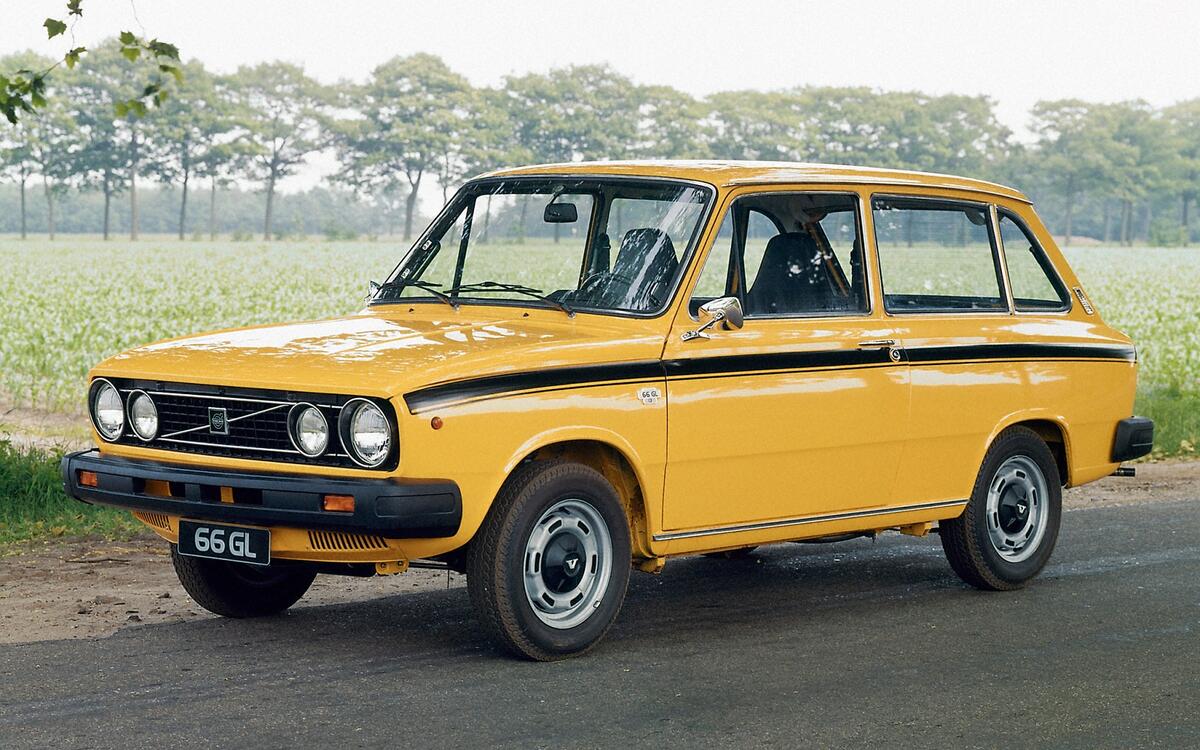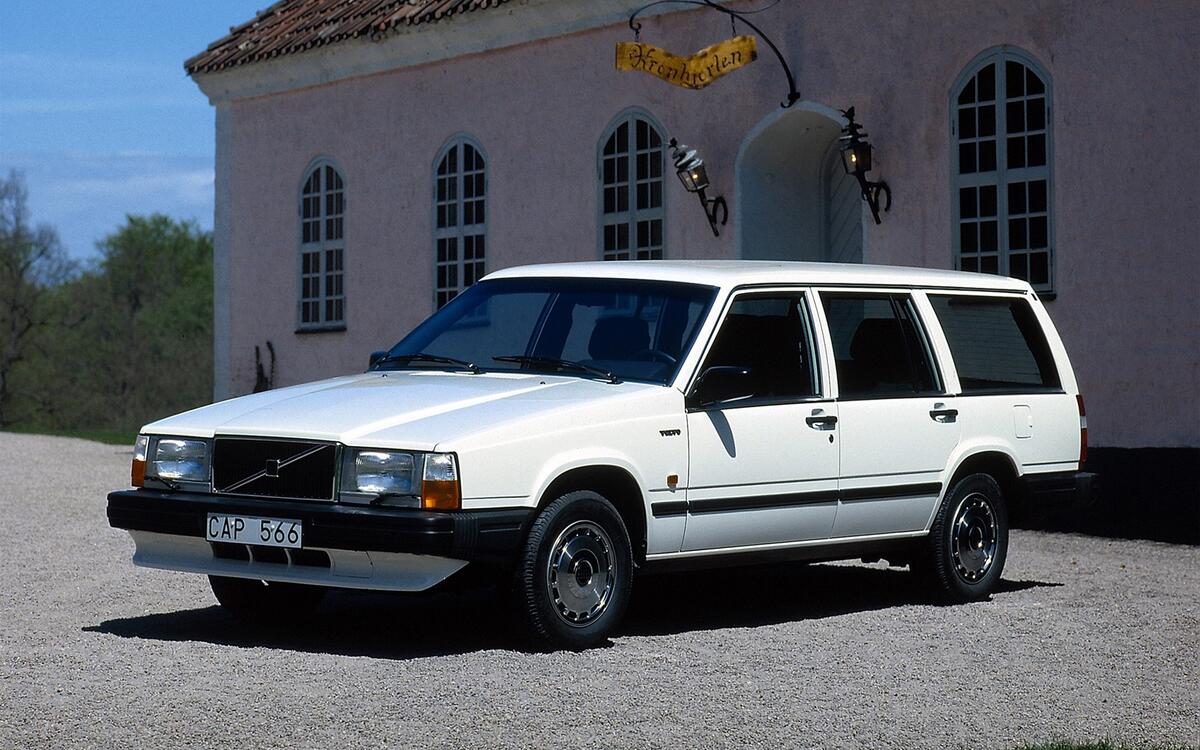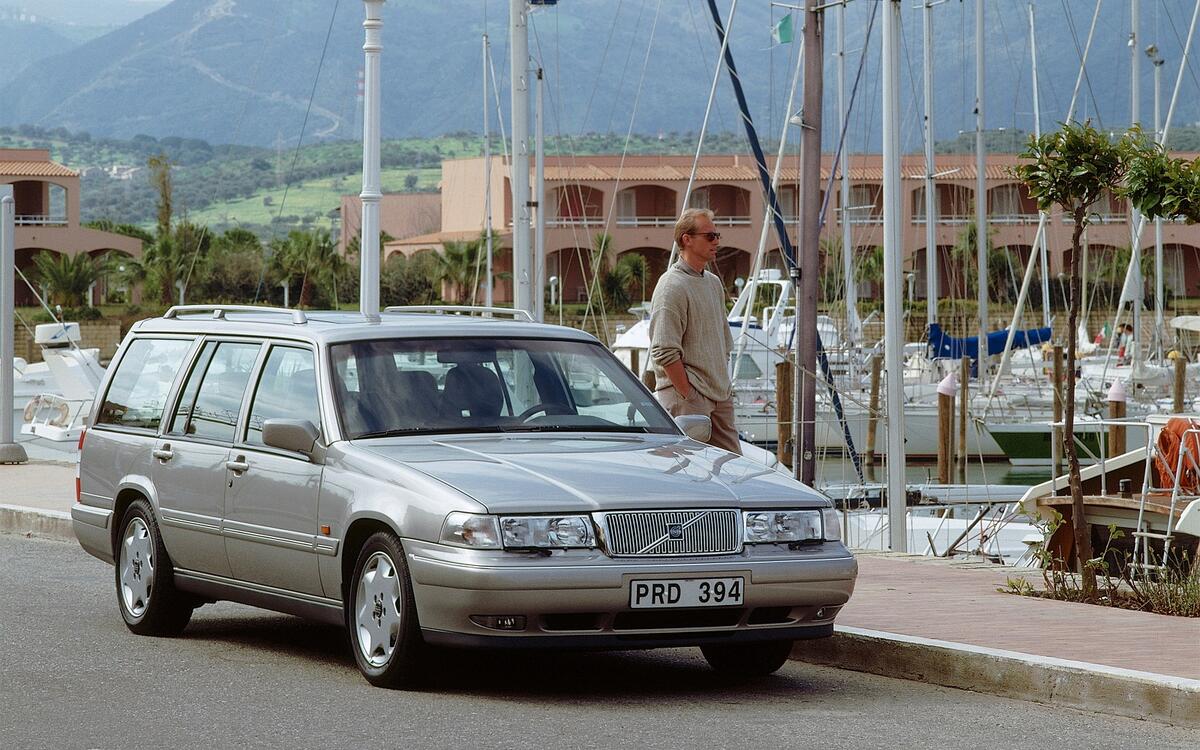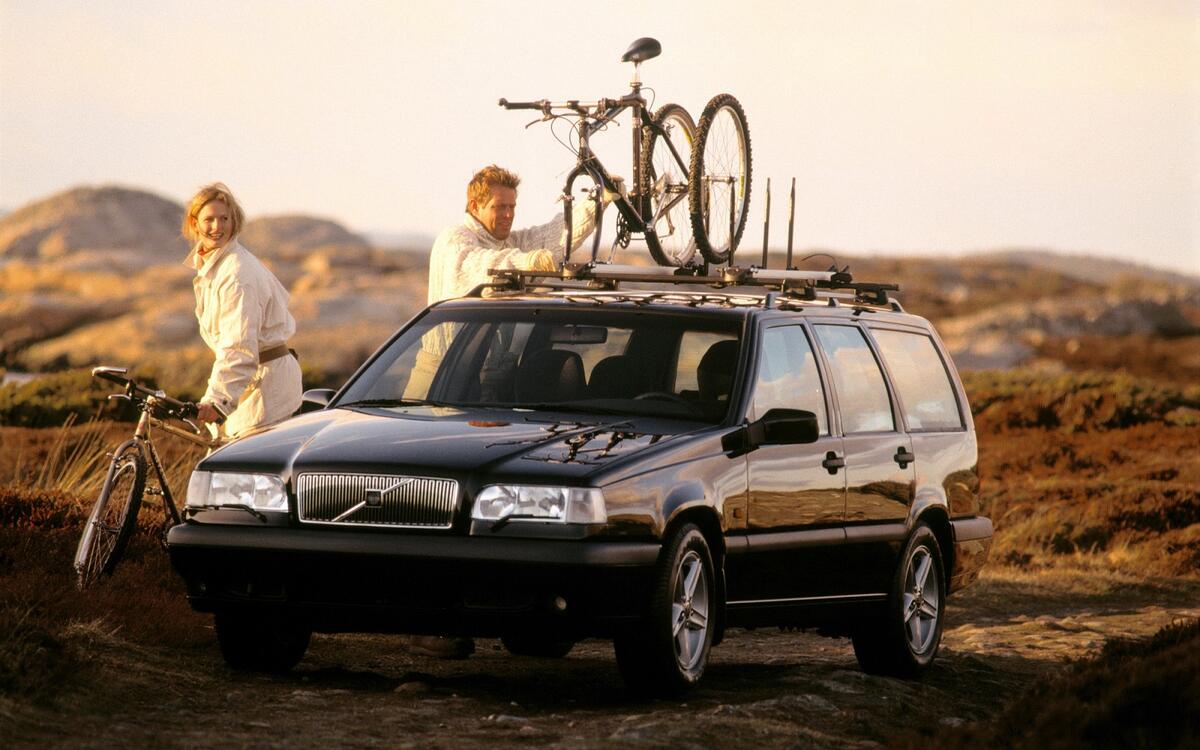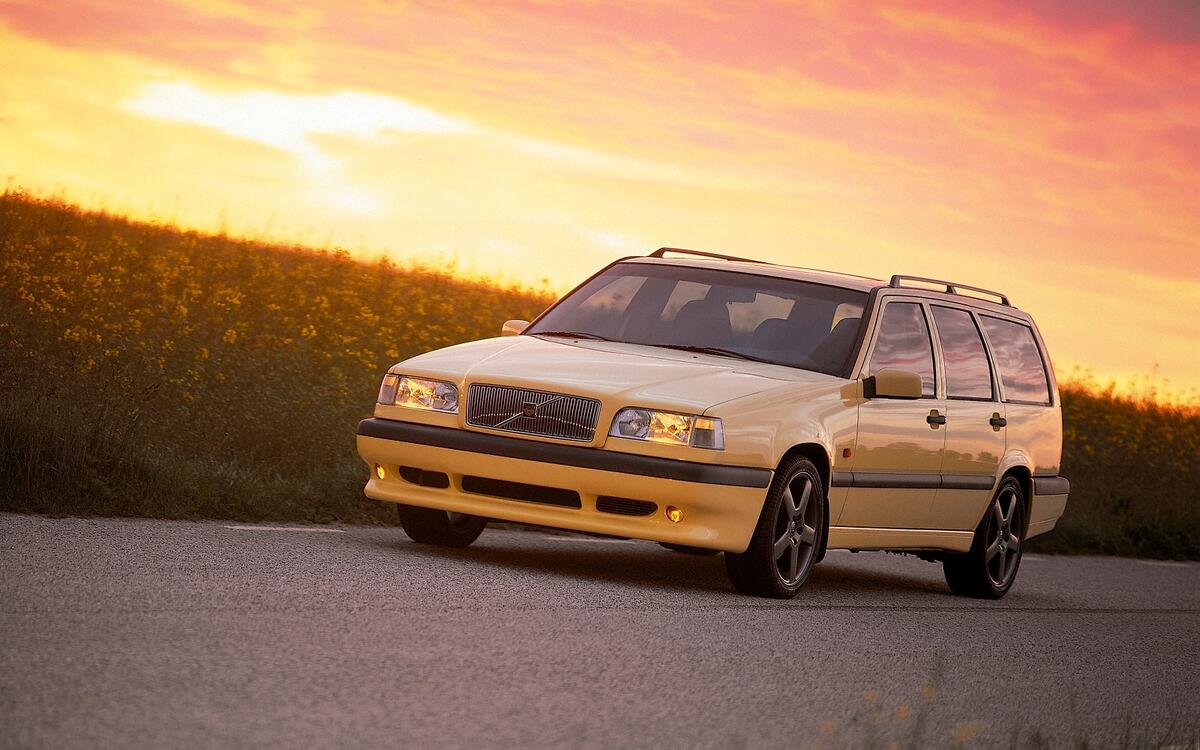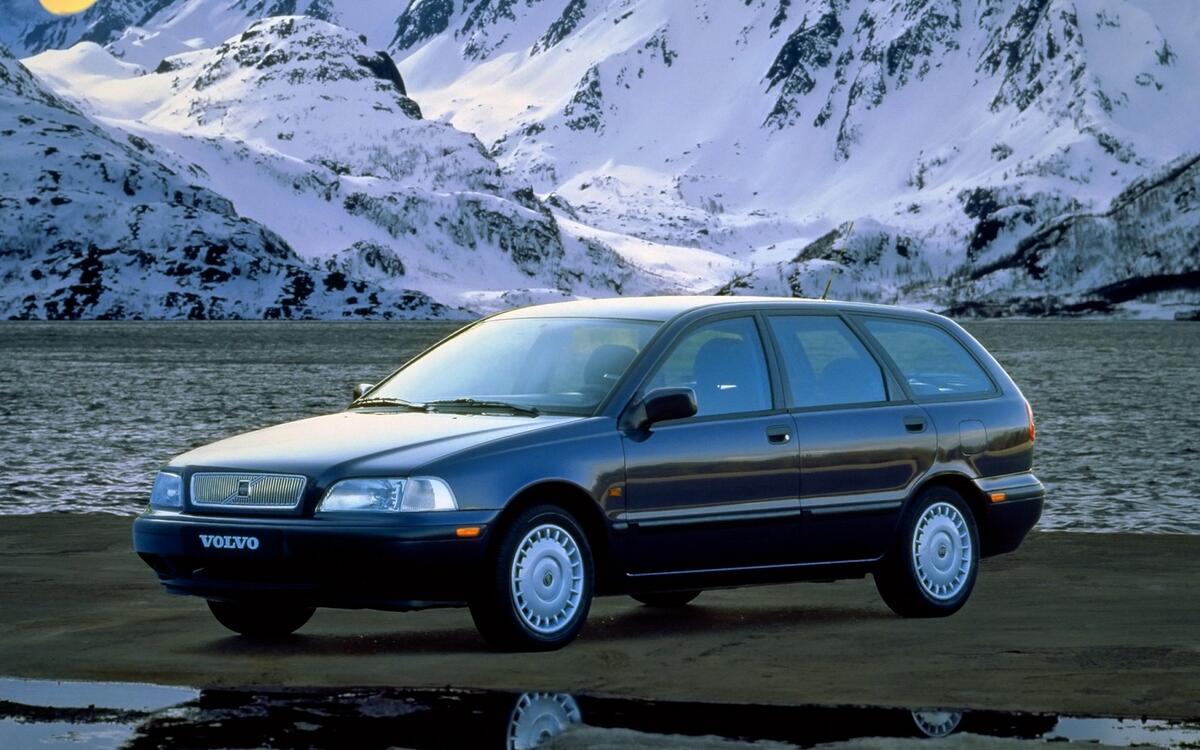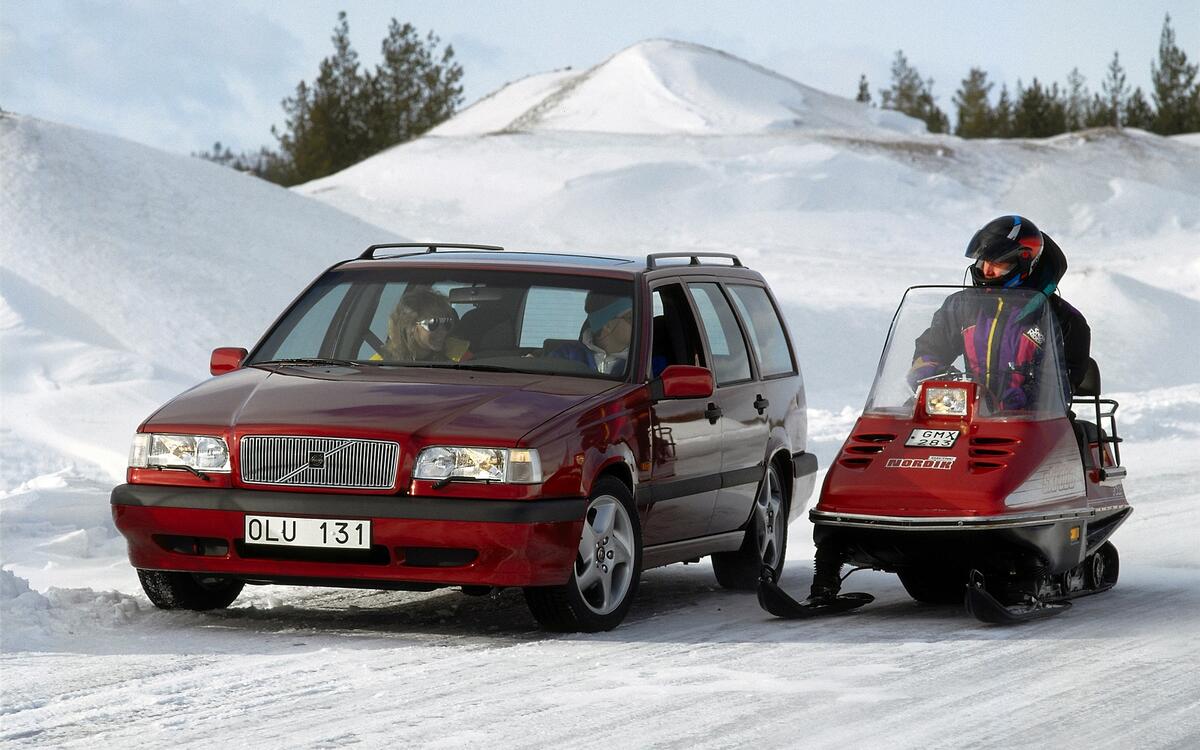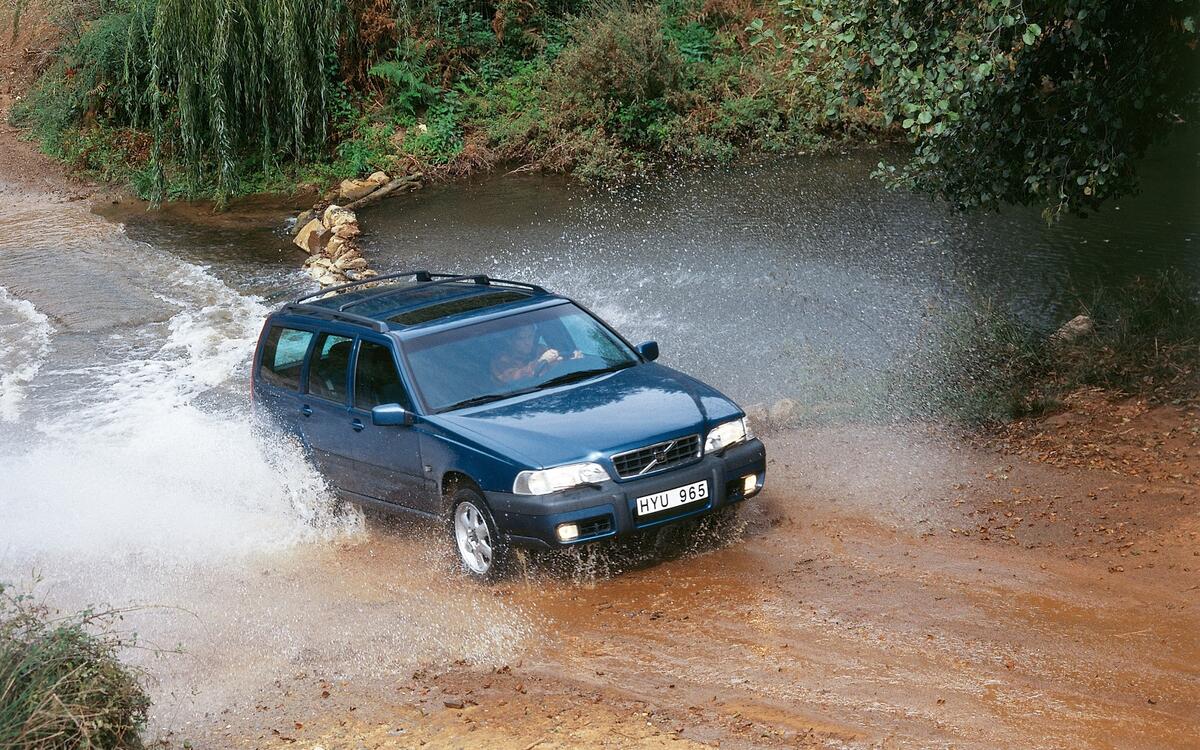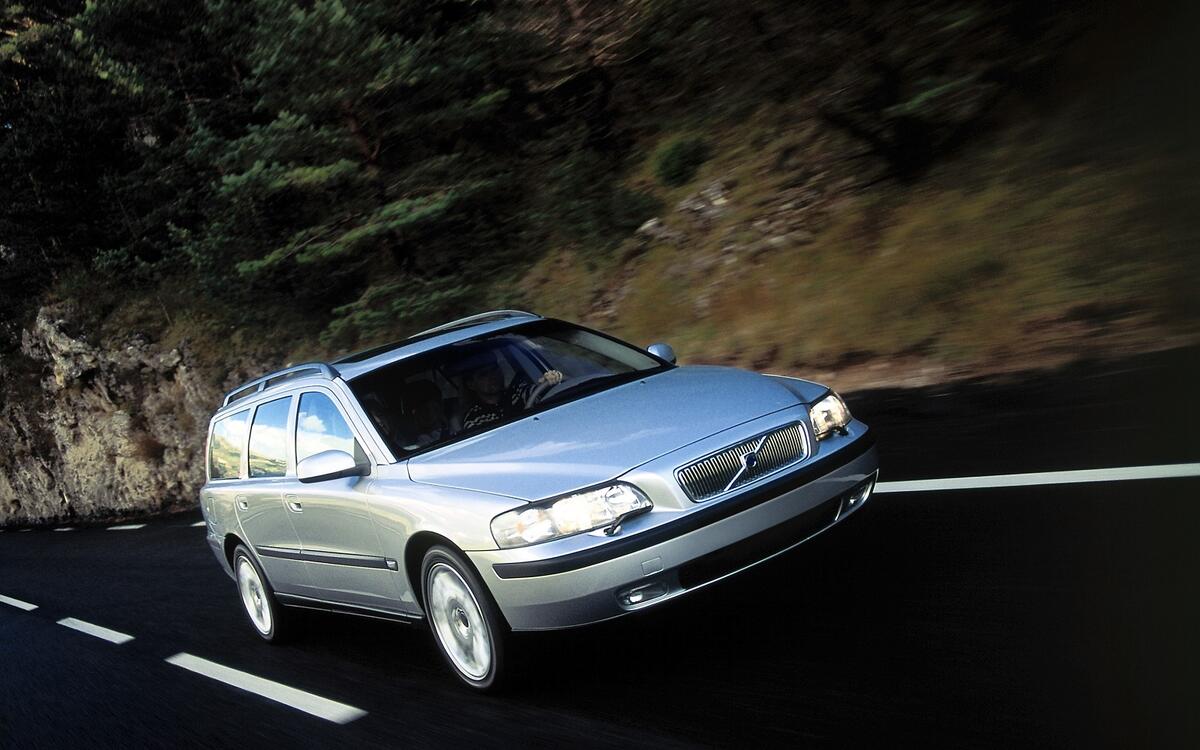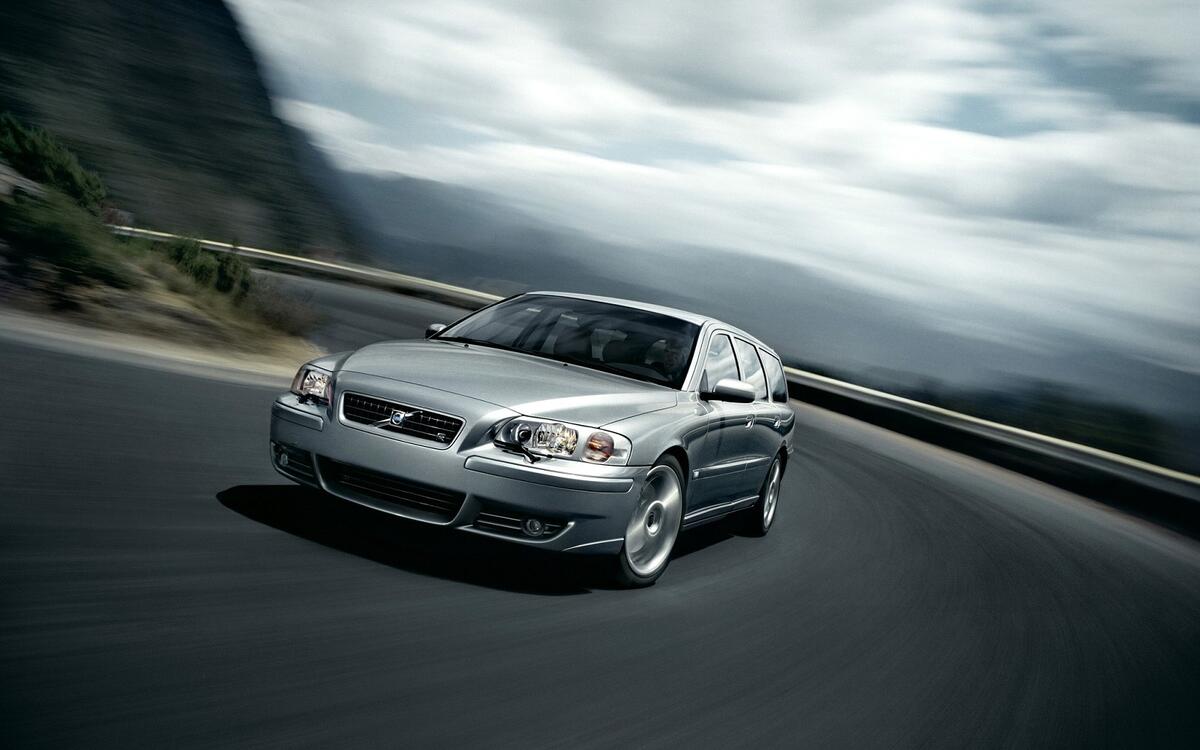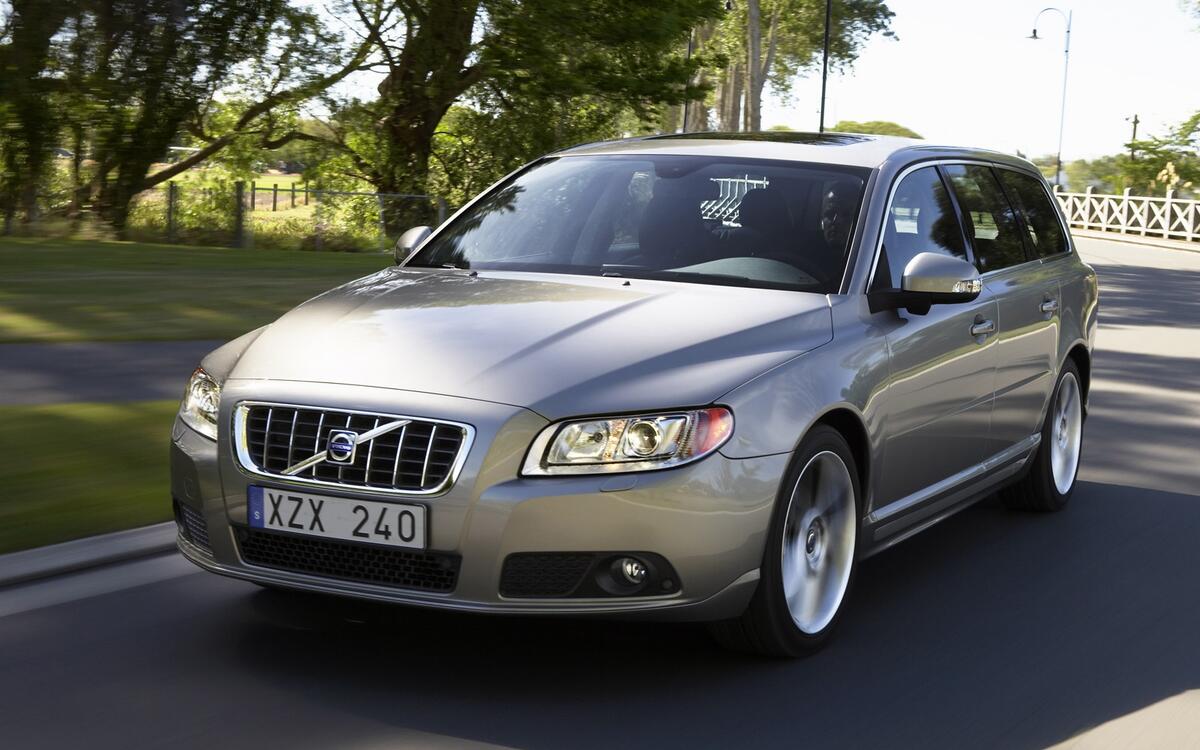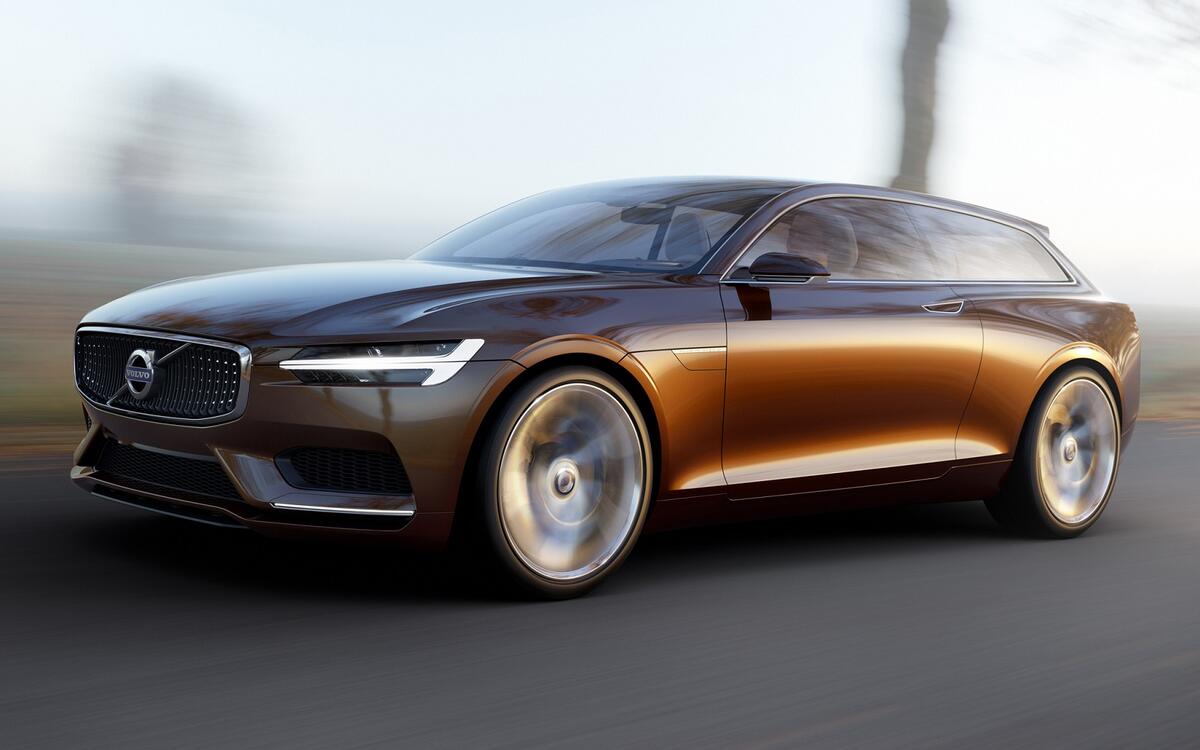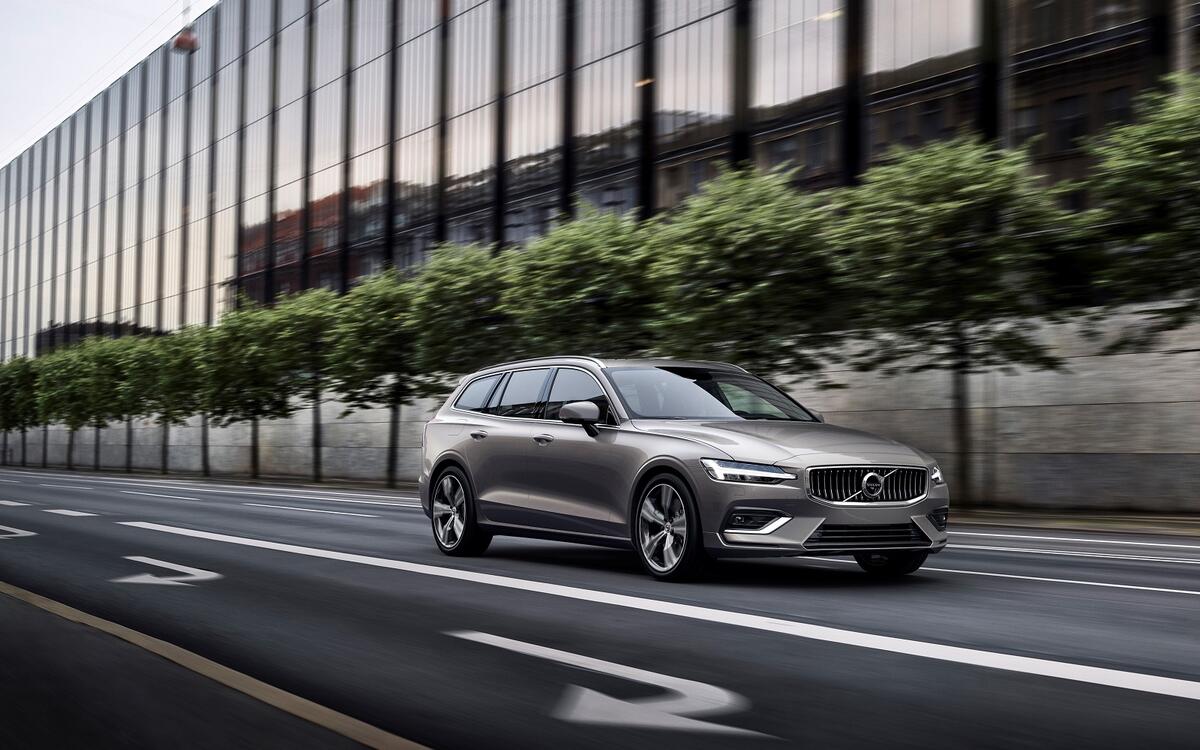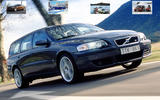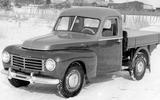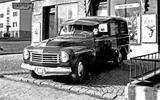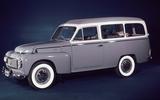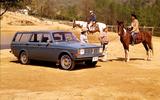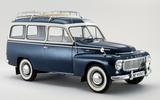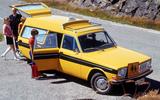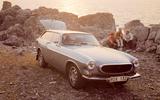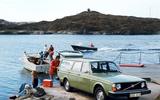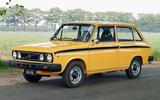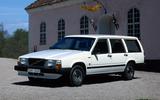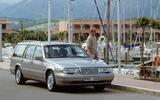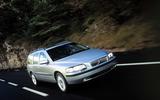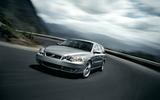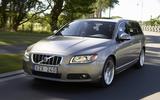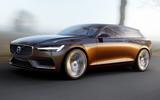 Slide of
Slide of
To date, Volvo has sold over six million station wagons worldwide.
The number represents about a third of the cars the company has built since its inception in 1927. No other auto-maker is so intricately tied to the long-roof body style, and executives remain firmly committed to making sure the station wagon survives the blitz from the SUV camp. Here’s how it all began:
 Slide of
Slide of
The PV444 goes on sale (1947)
Volvo launched the PV444 in 1947. It was a pivotal model in the company’s history, one that helped it make the leap from a relatively small national auto-maker to a mainstream brand present in key global markets. The PV444 notably enabled Volvo to gain a steady foothold in the United States, the world’s largest new car market at the time.
 Slide of
Slide of
The PV445 arrives (1949)
Volvo only made the PV444 as a two-door sedan. Though modern, its unibody construction largely prevented the over 30 coachbuilders operating in Sweden at the time from turning it into a commercial vehicle. Volvo responded by introducing a tougher model called PV445. It looked similar to the PV444 but it featured body-on-frame construction. The coachbuilding industry happily turned it into a pickup, a van, a hearse, an ambulance and a station wagon. Note: Klippan-built pickup pictured
 Slide of
Slide of
The wagon’s origins (1952)
PV445 sales waned in the early 1950s. Volvo optimistically attributes the drop to the car’s longevity; it notes owners tended to keep PV445s on the road for longer than anyone anticipated. Regardless of the reason, the dip in sales left the company with about 1500 unsold cars parked right outside of its factory. Dismayed at the sight of a growing pile of unsold cars, Volvo chief and co-founder Assar Gabrielsson suggested turning the PV445 into a wagon designed and built in-house.
 Slide of
Slide of
The Duett goes on sale (1953)
Volvo’s research and development department wasted no time executing Gabrielsson’s order. Engineers developed a dual-purpose model suitable for businesses and families, which explains why it received the name Duett. Production began on 4 July 1953 and Gabrielsson purchased the very first example. At launch, the Duett used a 1.4-liter four-cylinder engine rated at 44hp.
The line-up ultimately grew to include three variants named DH, DS, and PH, respectively. DH denoted the standard wagon, DS designated a panel van and PH signaled a passenger-carrying wagon.
 Slide of
Slide of
America’s Duet (1956)
Volvo waited approximately three years to sell the Duett in America, where it adopted the name Duet. The wagon made its debut at the 1956 New York auto show. That year, it carried a base price of $2345, a sum which represents about $21,500 today. The standard 1.4-liter engine made 70hp, while buyers willing to spend a little bit more money could get a 1.6-liter with 85hp on tap.
 Slide of
Slide of
Volvo’s first modern wagon (1962)
Volvo introduced the Amazon in September 1956 but it didn’t launch the wagon model (called 221) until 1962. Envisioned as a replacement for the Duett, it marked a massive leap forward in every category. It featured unibody construction, four doors, a more spacious cargo compartment and a two-way split tailgate inspired by American wagons. It was safe, stable at speed and family-friendly; in many ways, the Amazon stands proud as the first modern Volvo wagon.
 Slide of
Slide of
The 100-series (1968)
Volvo again jumped ahead when it launched the 144 in 1966. The model inaugurated a three-digit naming system that denoted the model series, the number of cylinders and the number of doors. The 145 – 1 series, four-cylinder and five doors – began rolling off the assembly line in 1968.
Like the 142 and the 144, the 145 benefited from four-wheel disc brakes and crumple zones. This last point was almost superstitiously impressive in an era where, broadly speaking, the front passengers were the crumple zones in a vast majority of cars.
 Slide of
Slide of
The PV445 bows out (1969)
During the 1960s, Volvo focused on its more recent models but it didn’t neglect its original wagon. The PV445 received upgrades like a one-piece windshield and a bigger engine.
The firm briefly built the PV445, the Amazon and the 145 simultaneously. PV445 production ended in 1969 when executives realized the aging model wouldn’t comply with new safety regulations introduced by the Swedish government. 97,298 examples were built during its long production run. The very last one went straight to the company’s museum, where it still resides today. Note: early model pictured.
 Slide of
Slide of
Volvo Express (1970)
Volvo knew it would build several variants of the 140-series early in the development process so it made the platform as flexible as possible. Though the 145 offered more than enough space for most users, the company begin producing an even bigger model named 145 Express in 1970. It received a taller roof from the B-pillar back, making it ideal for camper, taxi or ambulance duties.
 Slide of
Slide of
Volvo’s sexiest wagon (1971)
Volvo’s early wagons all placed an unabashed focus on utility. The P1800 ES showed a different side of the body style – and of the company. Based on the 1800 coupe, the ES received an extended roof, longer side windows and a glass hatch without a bezel. Volvo made a little over 8000 examples of the ES during two model years.
The P1800 ES cost $5150 in 1972, a figure that represents about $30,700 today. To add context, the equally voluptuous Alfa Romeo GTV cost $4948 (roughly $29,400 today) that same year.
 Slide of
Slide of
Volvo’s most emblematic wagon (1974)
The 245 replaced the 145 in 1974. It benefited from many advances in the field of automotive safety, including some first seen on the Experimental Safety Car (VESC) concept in 1972. The 245 later spawned the 265, which offered a V6 engine, and it became the brand’s first production turbocharged station wagon when it received a 2.1-liter four-cylinder with 162hp.
Prized by antique dealers and soccer moms alike, the 200-series remained in production for nearly 20 years. When Volvo pulled the plug on the model in 1993, it had already become one of its most emblematic cars. It remains the quintessential Volvo wagon for many enthusiasts.
 Slide of
Slide of
Volvo’s smallest wagon (1975)
The 66 often gets overlooked in the history of Volvo wagons. It wasn’t a cavernous, family-friendly model capable of effortlessly cruising across a continent in a moment’s notice. It was a much smaller car whose design Volvo acquired when it purchased Dutch auto-maker DAF. The 66 family included a two-door sedan and a three-door wagon. Both models stemmed from the DAF 66 launched in 1972.
The Volvo-badged 66 inherited its DAF-built predecessor’s continuously variable transmission (CVT). It came with either a 1.1- or a 1.3-liter four-cylinder engine borrowed from the Renault parts bin. The model never enjoyed the loyal following of bigger Volvo models.
 Slide of
Slide of
The other 7 series (1985)
Volvo introduced the 700-series at the 1985 Chicago auto show, and it sold the model exclusively in the United States during its first year on the market. By that point, America had become one of Volvo’s most important markets. Demand for high-performance cars grew, and motorists on both sides of the pond loved the 245 Turbo, so Volvo made a 740 Turbo with 200hp.
The flagship 760 model received the same Peugeot-Renault-Volvo (PRV) V6 as the 265.
 Slide of
Slide of
Volvo’s last rear-wheel drive wagon (1990)
Staying true to tradition, Volvo replaced the 700-series by evolving it into a new model line named 900-series. Buyers could choose between two models named 940 and 960, respectively. Each was offered as a sedan and as a station wagon. During the 1990s, the 900-series helped Volvo move upmarket and position itself as a credible alternative to Mercedes-Benz, Audi and BMW.
Volvo re-badged the sedan and wagon variants of the 960 S90 and V90, respectively, in 1996.
 Slide of
Slide of
A new kind of wagon (1992)
Volvo risked alienating some of its buyers by moving the 900-series upmarket. It consequently expanded its model line-up with a smaller car named 850. Production of the 850 wagon began in 1992 and the first cars reached showrooms in early 1993.
The 850 inaugurated a family of five-cylinder engines mounted transversally. Versatility was more important to the average wagon buyer than all-out performance, however, and the 850 didn’t disappoint. It surprised owners with small but time-saving innovations like rear headrests that didn’t need to be removed before folding down the seatbacks.
 Slide of
Slide of
Volvo’s super-wagons (1994)
The 245 Turbo made waves in the 1980s and the 740 Turbo later had the same effect. As a follow-up, Volvo turbocharged the 850 to create a hot-rodded family hauler named T5-R (pictured). Offered as a sedan and as a wagon, the limited-edition model came with a 240hp five-cylinder engine which sent it from zero to 62mph in 6.9sec. Volvo capped production at under 7000 units worldwide.
Fans went wild, so Volvo announced a second performance-oriented 850 named R in 1996. It packed 250hp when equipped with a manual transmission.
 Slide of
Slide of
Downsizing the wagon (1996)
Volvo teamed up with Mitsubishi to introduce a new line of compact models positioned a notch below the 850. Presented in early 1996, the S40 picked up where the 440/460 left off. It spawned a wagon named V40 a few months later. While many scoffed at the Mitsubishi connection, the V40 lived up to Volvo’s hard-earned reputation for placing safety above all. It notably became one of the first cars in its class equipped with side airbags.
 Slide of
Slide of
Volvo goes all-wheel drive (1996)
The 850 wagon became the first series-produced Volvo equipped with all-wheel drive. Introduced in May 1996, the winter-friendly version launched with a 2.5-liter five-cylinder engine turbocharged to produce 193hp. The five’s output flowed to the pavement through a five-speed manual transmission. While Volvo entered the segment well after its German rivals, the all-wheel drive variant of the 850 paved the way for one of the company’s most important models.
 Slide of
Slide of
The original Cross Country (1997)
Volvo turned the 850 into the first-generation V70 in November 1996. It was available with its predecessor’s all-wheel drive system from the get-go. Significantly, the V70 became the firm’s first Cross Country-badged wagon in September 1997.
Starting with an all-wheel drive V70, Volvo created the original V70 Cross Country by raising the ground clearance and adding SUV-like styling cues such as plastic cladding on the bumpers. It became an instant hit, one which inspired scores of competitors to launch their own toughened-up wagons.
 Slide of
Slide of
Thinking outside the box (2000)
By the turn of the millennium, Volvo had established a reputation for building safe, solid and reliable cars that were, above all, boxy. Some of the company’s ads even alluded to the boxiness during the 1980s, concluding it was better to be safe than sexy.
Designers began thinking outside the box when they worked on the original S60 and the second-generation V70. The styling incorporated more rounded surfaces to create a shapely design without sacrificing cargo capacity. The company was now under new ownership; Volvo Cars had been separated from Volvo's heavy trucks arm, and sold to Ford Motor Company in 1999.
 Slide of
Slide of
The R returns (2003)
The R model returned to the V70 line-up at the 2002 Paris auto show. This time around, it packed a 2.5-liter five-cylinder engine rated at 300hp. Four-wheel drive, Brembo brakes and an adjustable suspension system made the V70 R a true driver’s car.
 Slide of
Slide of
The V70 gets a six (2007)
Volvo introduced a brand-new V70 in 2007. It resembled the model it replaced but many of the important changes lurked under the sheet metal. The third-generation model offered more space for the rear passengers, more cargo capacity and available six-cylinder engines, a first for the V70.
The platform used for the vehicle was shared with many other Ford-built vehicles, including the 2006 Mondeo, S-Max MPV, and 2006 Land Rover LR2 (named Freelander 2 in Europe).
 Slide of
Slide of
Concept Estate (2014)
Ford sold Volvo to China's Geely in 2010. Volvo then embarked on a design renaissance, and in 2014 the company paid tribute to the P1800 ES with a concept car named, appropriately, Concept Estate. Unveiled at the Geneva auto show, it accurately previewed the styling direction the company planned to take as it began the lengthy process of overhauling its entire line-up.
 Slide of
Slide of
The second V90 (2016)
The rumors claiming we’d see the Concept Estate in showrooms turned out false, but the design study liberally shared styling cues with the second-generation V90. It instantly became one of Volvo’s best-looking long-roof models and shattered the notion that wagon is a byword for boring.
In America, where the wagon’s popularity seemingly reaches an all-time low each year, Volvo only sells the V90 to customers willing to place a special order. The Cross Country model – which outsells the car it’s based on – represents the V90 nameplate in Volvo’s catalog.
 Slide of
Slide of
Volvo’s newest wagon (2018)
Volvo introduced its newest wagon, the second-generation V60, in February 2018 in the driveway of a suburban home located on the outskirts of Stockholm. The company chose the location instead of a more high-profile spot because it calls suburban neighborhoods the V60’s natural habitat. The more rugged V60 Cross Country will make its debut before the end of the year.
The cars may look sharper and sleeker than ever, but Volvo's proud wagon tradition continues.
Everyone loves a Volvo estate, Autocar included.
Advertisement


